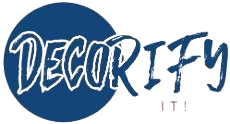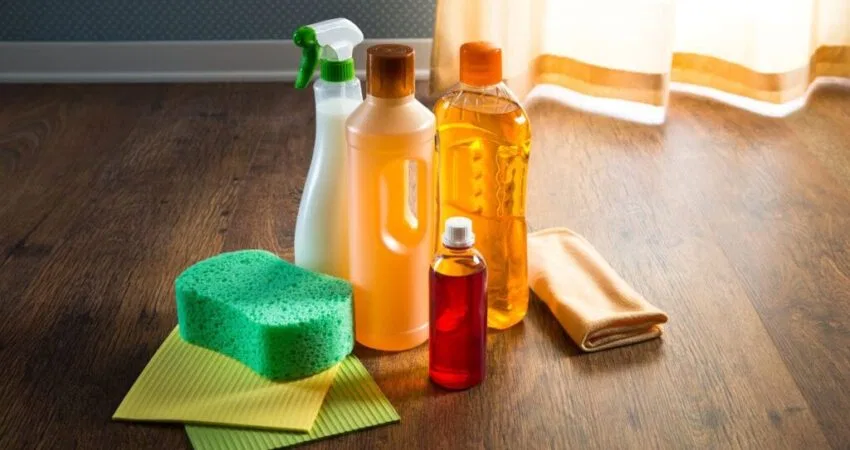Written by Nyla Thompson, founder of DecorifyIt and home improvement expert with 15+ years of hands-on experience
Hardwood floors bring timeless elegance to any home—but they demand proper care to stay beautiful. Store-bought cleaners can be expensive or contain harsh chemicals, which is why more homeowners are turning to homemade solutions. Below, I’ll walk you through the 7 best homemade hardwood floor cleaner ideas that are safe, effective, and easy to whip up with ingredients you likely already have.
1. Vinegar and Water
This timeless homemade cleaner is a go-to for many homeowners—and for good reason. Vinegar is naturally acidic, which makes it excellent at cutting through residue like mud, dust, and dried spills. When diluted with warm water in a 1:3 ratio (one part vinegar to three parts water), it becomes safe for most sealed hardwood floors. According to Flooring Inc., this combo breaks down dirt and grime without harming most sealed wood floors.
I recommend using distilled white vinegar rather than apple cider vinegar, as the latter can sometimes leave a sticky film. Use a spray bottle or bucket for application, and avoid soaking your mop—damp is always better than wet.
This method is best for weekly maintenance, especially in entryways or dining areas where dirt accumulates quickly. However, avoid using this solution on waxed or unsealed wood floors, as vinegar can break down natural oils and protective layers over time.
For tips on post-cleaning shine, read our guide on how to make hardwood floors shine naturally and safely.
2. Vinegar, Water, and Essential Oils
Let’s face it—vinegar doesn’t smell great. That’s where essential oils step in. Adding 5–10 drops of essential oil per gallon of cleaning solution can make your cleaning experience more pleasant and your home smell fresher.
Lemon and lavender are popular choices, but eucalyptus, peppermint, and orange oil also have natural antibacterial and antifungal properties. This makes them especially useful in households with pets or toddlers crawling around.
Not only do essential oils improve the scent, but they can also subtly condition wood when used in small amounts. Just make sure you’re buying pure, high-quality oils, not synthetic fragrances, which can leave residue or cause streaking.
3. Vinegar and Vegetable Oil
This combo is ideal for older floors or those with a low-sheen matte finish, where water might do more harm than good. The vinegar helps clean grime and bacteria, while the vegetable oil acts as a conditioning agent, restoring some of the wood’s natural luster. It’s a great alternative if you’re also considering homemade hardwood floor polish options that are safe for kids and pets.
To make this, mix equal parts vinegar and vegetable oil in a spray bottle. Shake it well before each use, as the ingredients will separate. Mist it lightly over a section of the floor, and immediately buff with a soft, clean microfiber cloth.
What I love about this method is that it also fills in light scratches and dull areas, helping the floor look refreshed without any wax buildup. Just avoid using it near kitchen prep areas or entryways, where oil might make the floor slippery if overapplied.
4. Black Tea
Using black tea to clean hardwood floors might sound unconventional, but it’s a well-kept secret among natural cleaning enthusiasts. The tannic acid found in tea helps enhance wood’s richness and color while gently lifting dirt and grime.
Start by steeping 3–4 black tea bags in 1 quart of boiling water for 10–15 minutes. Let the tea cool completely to avoid heat damage to your floors. Dip a clean microfiber cloth or mop into the tea, wring it out thoroughly, and wipe the floors in small sections.
This method works beautifully on darker-stained hardwood floors, bringing out natural shine without a waxy finish. But here’s the catch: always do a patch test first. On lighter floors, tea could leave a tint or visible streaks if not applied evenly. Also, avoid using this method on pre-finished or laminate wood surfaces, as the liquid might not interact well with factory coatings.
5. Olive Oil and Lemon Juice
Think of this cleaner as part cleanser, part polish. Olive oil moisturizes and enriches the wood, while lemon juice acts as a natural degreaser, breaking down sticky spots and lifting mild stains.
To make it, combine ¾ cup olive oil with ½ cup lemon juice, and pour it into a gallon of warm water. Mix well and dip your mop into the solution, wringing it out as much as possible. Work in small sections to avoid any slippery residue.
This mix is perfect for refreshing dull, high-traffic areas like living rooms or staircases. The scent is crisp and inviting, and the finish it leaves behind gives your floors a subtle gleam without harsh chemicals. Just be sure to follow with a dry mop or towel to remove excess oil and prevent slick spots.
6. Dish Detergent, Water, and Vinegar
This triple-action blend is your best friend when dealing with kitchen floors, grease stains, or pet messes. While vinegar cuts grime, the dish soap enhances lifting power, and warm water helps loosen dried-on spills.
Mix ¼ cup of mild dish detergent (like Castile or eco-friendly brands) with 3 cups of warm water, and add 1 cup of vinegar. Avoid soaps with added bleach or moisturizers, as they may leave streaks or damage floor finishes.
Use a microfiber mop dipped in the solution and wrung out thoroughly. After cleaning, rinse the floor with a separate mop dampened in clean water, and finish by drying with a towel or microfiber pad.
This formula is a lifesaver in households with kids or heavy kitchen traffic—it breaks down sticky spots, footprints, and even dried juice spills without scratching or dulling the finish.
7. Plant-Based Liquid Soap, Vinegar, and Water
If you’re looking for a gentle yet effective option, this eco-conscious solution is ideal. Plant-based soaps, especially those made from coconut or olive oil, clean without leaving behind harsh residues, making them perfect for delicate or sustainably finished hardwood.
To prepare, mix 1 tablespoon of plant-based liquid soap, 1 cup of white vinegar, and 1 gallon of warm water. Stir the solution gently—don’t shake it, as natural soaps tend to foam. Apply it with a lightly damp mop, focusing on one area at a time to avoid soaking the floor.
This formula works particularly well for households with babies, allergy sensitivities, or pets that lounge on the floor. It lifts light dirt and restores a clean look without overpowering scents or lingering film. Plus, using biodegradable soap supports a greener cleaning routine—great for your home and the environment.
Important Considerations Before You Start
Homemade cleaners are cost-effective and safe—but only when used correctly. To avoid damage and get the best results, here are a few must-follow tips:
1. Test First
Before using any new solution, test it on a hidden corner of your hardwood floor, such as behind furniture or near a baseboard. This simple step ensures the cleaner won’t cause discoloration, dulling, or chemical reactions with your floor’s finish.
Certain wood finishes—especially waxed, oiled, or unfinished floors—can react negatively to common ingredients like vinegar, lemon juice, or oils. A spot test gives peace of mind and prevents costly damage.
2. Avoid Excess Moisture
Water is hardwood’s biggest enemy. Even small amounts can seep between planks, causing swelling, warping, or mold over time. When using any liquid cleaner—homemade or store-bought—make sure your mop or cloth is thoroughly wrung out. For more on moisture issues, explore our post about why steam mops can harm hardwood floors if used incorrectly.
As noted by Total Floor Sanding and Polishing, never let puddles sit on the surface, and avoid soaking the wood at all costs. Stick to a damp-clean method: the mop should feel moist to the touch, but not dripping.
3. Dry Thoroughly
After cleaning, it’s not enough to let your floor air dry. Use a clean, dry microfiber cloth or mop to go over the surface immediately. This helps remove lingering moisture and buffs the wood, enhancing its natural shine.
If your room has poor ventilation or high humidity, open windows or run a fan to speed up the drying process. This is especially important in kitchens and entryways where moisture can accumulate unnoticed.
4. Know Your Floor Type
Before choosing a DIY cleaning solution, understand your specific hardwood flooring finish. If you’re not sure what you have, our side-by-side comparison of engineered wood vs. hardwood flooring can help identify your floor type. Some finishes—like urethane, polyurethane, or aluminum oxide coatings—handle moisture and acidity better than others. However, waxed or oil-finished floors require specialized care and should never be cleaned with vinegar or acidic ingredients.
If you’re unsure, contact your flooring manufacturer or consult your installation documents. It’s worth the extra effort to keep your floor looking its best without accidentally stripping the finish.
Final Thoughts: Keep It Natural, Keep It Safe
Homemade hardwood floor cleaners give you the flexibility to control what touches your floors—no mystery ingredients, no overpowering chemicals, and no unnecessary expense. Whether you’re deep-cleaning your hallway or doing weekly upkeep in the living room, the solutions above offer something for every need:
- Vinegar and water for simple, effective cleaning
- Oils and citrus blends for conditioning and polishing
- Tea and soap mixtures for eco-friendly maintenance
Just remember to follow the golden rules of hardwood care: test before using, avoid too much water, and dry thoroughly afterward. These habits not only preserve the beauty of your floors but also extend their life—saving you the cost and headache of early refinishing.
Frequently Asked Questions
What is the best homemade hardwood floor cleaner?
The best all-around homemade cleaner is a mixture of 1 part white vinegar and 3 parts warm water, applied with a damp microfiber mop. It effectively removes dirt and grime from sealed hardwood without leaving residue.
Is it safe to use vinegar on hardwood floors?
Yes, vinegar is safe for sealed hardwood floors, but only when diluted properly. Always use a 1:3 vinegar-to-water ratio and never apply it to waxed, oiled, or unsealed wood finishes.
Can I use dish soap to clean hardwood floors?
You can use a few drops of mild dish soap mixed with warm water and vinegar to clean sticky or greasy spots. Just avoid overusing it, as too much soap may leave a slippery film.
How do I make my hardwood floors shiny naturally?
Try a mix of olive oil and lemon juice (¾ cup oil, ½ cup lemon juice, 1 gallon warm water). Mop with a well-wrung cloth, then buff dry. This adds a gentle polish and conditions the wood.
Will black tea stain my floors?
Black tea can stain light-colored or unfinished floors, so always test in a small area first. When used correctly, it enhances shine on darker, sealed hardwoods.
How often should I clean hardwood floors?
For most households, a weekly damp mop with a homemade cleaner is enough. High-traffic areas may need spot cleaning every few days using a spray-and-wipe method.
What should I avoid using on hardwood floors?
Avoid undiluted vinegar, bleach, ammonia, steam mops, or excessive water. These can strip finishes, dull the surface, or cause long-term damage.
For more DIY floor care solutions, check out our guide on how to clean old hardwood floors at DecorifyIt—your trusted guide for all things home.

